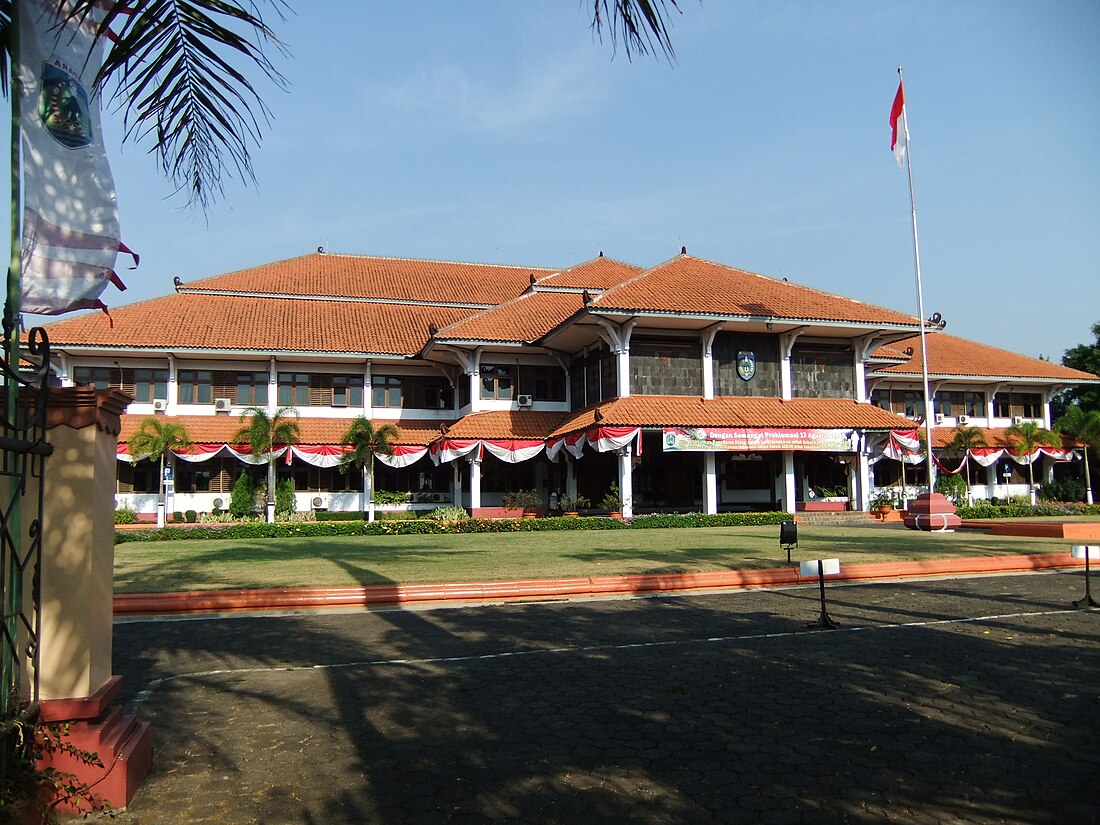Top Qs
Timeline
Chat
Perspective
Jepara Regency
Regency in Central Java, Indonesia From Wikipedia, the free encyclopedia
Remove ads
Jepara (Javanese: ꦗꦼꦥꦫ) is a regency in the northeast of the Indonesian province of Central Java. It covers an area of 1,020.25 km2 and had a population of 1,097,280 at the 2010 census[2] and 1,184,947 at the 2020 census;[3] the official estimate as at mid 2023 was 1,283,687 (comprising 645,757 males and 637,930 females).[1] Its capital is Jepara town.
Remove ads
History

People believed to have come from South Yunnan region migrated into the northern tip of Java during a time when Jepara was still separated by the Juwana Strait.[citation needed]

In the 16th century, Jepara was an important port; in early 1513, its king, Yunnus (Pati Unus) led an attack against Portuguese Malacca. His force is said to have been made up of one hundred ships and 5000 men from Jepara and Palembang but was defeated. Between 1518 and 1521 he apparently ruled over Demak. The rule of Ratu ('Queen') Kalinyamat in the latter 16th century was, however, Jepara's most influential. Jepara again attacked Malacca in 1551 this time with Johor but was defeated, and in 1574 besieged Malacca for three months.[4]
The regency is the birthplace of Indonesian national heroine Kartini.[5]
Remove ads
Geography
Jepara Regency is located in the northeastern coastal region of Central Java, bordering Java Sea in the north and west, Kudus Regency and Pati Regency in the east, and Demak Regency in the south. The eastern border is primarily a mountainous region, with the most notable peak being Mount Muria. The regency also includes the Karimumjawa Archipelago, itself recognized as an administrative district, located in the Java Sea approximately 80 kilometres northwest from the mainland part of Jepara Regency.
Remove ads
Administrative districts
Summarize
Perspective
Jepara Regency comprises sixteen districts (kecamatan), tabulated below with their areas and their populations at the 2010 census[2] and the 2020 census,[3] together with the official estimates as at mid 2024.[1] The table also includes the locations of the district administrative centres, the number of administrative villages in each district (totaling 184 rural desa and 11 urban kelurahan - the latter all in Jepara town district), and its post code.
Note: (a) comprises 11 urban kelurahan (Bapangan, Bulu, Demaan, Jobokuto, Karangkebagusan, Kauman, Panggang, Pengkol, Potroyudan, Saripan and Ujungbatu) and 5 rural desa.
Contemporary Jepara
The population is almost entirely Javanese and over 95% Muslim.[citation needed] As a pesisir ('coastal') area many traders from around the world landed in Jepara centuries ago.[citation needed]
Tourism
Tourism in Jepara is an important component of the economy of Jepara and a significant source of tax revenue. Jepara is a town which is known for its culinary, education, tourism, and rich cultural heritage. There are many possibilities and opportunities for the city to prosper and benefit more, but yet until now the government has not yet fully utilized them. Jepara, although only a small town, has many tourist attractions, with the mountain tourism, beach tourism, underwater tours, tour of the islands. Foreign tourists often visit Tirto Samodra Beach (Bandengan Beach), Karimunjawa Islands (Crimon Java), Kartini Beach, etc.
Remove ads
References
External links
Wikiwand - on
Seamless Wikipedia browsing. On steroids.
Remove ads



